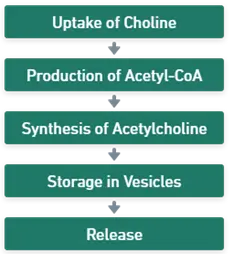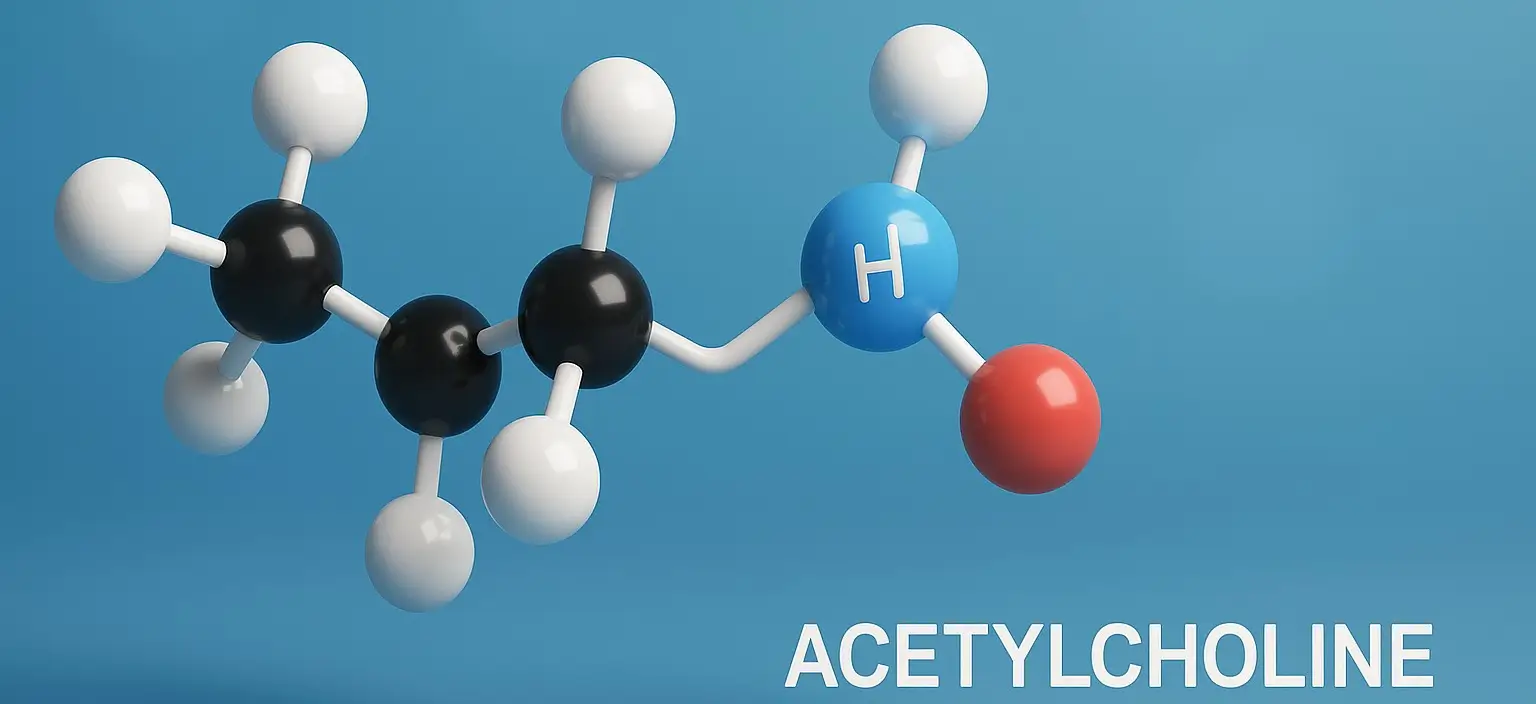- Acetylcholine (ACh) is a neurotransmitter a chemical messenger that plays a crucial role in transmitting signals in both the central and peripheral nervous systems.
Biosynthesis of acetylcholine
-
Location
- Synthesized in the cytoplasm of cholinergic neurons, particularly at nerve terminals.
-
Precursors
- Choline: Obtained from diet and recycled ACh.
- Acetyl-CoA: Formed in mitochondria from pyruvate (product of glucose metabolism).
-
Enzyme Involved
- Choline acetyltransferase (ChAT): Exclusively present in cholinergic neurons.
Advertisements
Step-by-Step Process

-
Uptake of Choline
- Choline enters the presynaptic neuron via high-affinity choline transporters (CHT1).
- This is an active, sodium-dependent
- Choline can be derived from:
- Diet (e.g., eggs, meat)
- Breakdown of previously released acetylcholine
-
Production of Acetyl-CoA
- Produced by the pyruvate dehydrogenase complex in mitochondria.
- Acetyl-CoA provides the acetyl group for ACh synthesis.
-
Synthesis of Acetylcholine
- Catalyzed by choline acetyltransferase (ChAT) in the cytoplasm.
- Reaction:
- $\mathrm{Choline + Acetyl\text{-}CoA \longrightarrow Acetylcholine + CoA}
$
-
Storage in Vesicles
- It is actively transported into synaptic vesicles by vesicular acetylcholine transporter (VAChT).
- Stored until released upon nerve stimulation.
-
Release
- Triggered by influx of calcium ions following an action potential.
- Vesicles fuse with the presynaptic membrane and release ACh via exocytosis.
Advertisements
Catabolism of acetylcholine
-
Enzyme Involved
- Acetylcholinesterase (AChE): Present in the synaptic cleft and on postsynaptic membranes.
-
Reaction
- $\text{Acetylcholine} \longrightarrow \text{Choline} + \text{Acetate}
$ - Choline: Taken back up by presynaptic choline transporters and reused.
- Acetate: Diffuses away and is metabolized.
- $\text{Acetylcholine} \longrightarrow \text{Choline} + \text{Acetate}
-
Importance
- Prevents continuous stimulation of the postsynaptic cell.
- Ensures precise, short-lived synaptic signaling.
- Rapid breakdown (within milliseconds) is crucial, especially at neuromuscular junctions.
Click Here to Watch the Best Pharma Videos
Advertisements

